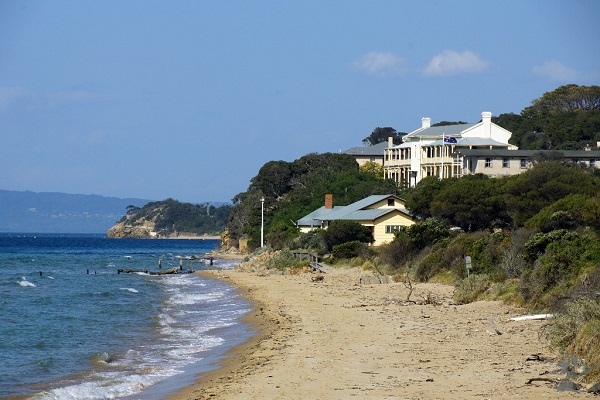
With the discovery of gold in 1851 the steady flow of immigrants sailing into the Port Phillip District became a flood. Within a year nearly 100,000 people had arrived in Melbourne by sea. Due to the crowded conditions on board, ships were breeding grounds for disease. Cholera, smallpox, typhoid, influenza and measles occurred in epidemics in the 1800s and caused many deaths. A number of ships suffered significant outbreaks of disease on the voyage to the colony. The Ticonderoga lost 100 passengers to scarlet fever and typhoid by the time it anchored off Portsea.
To control and prevent the spread of these diseases Point Nepean was opened in 1852 as a maritime quarantine reserve. Ships carrying passengers with infectious diseases were required to land all cases there along with those at risk of contracting the disease. Passengers’ luggage was taken ashore to be fumigated with formaldehyde gas and passengers were required to take baths using antiseptic soap.
The quarantine station contains the oldest barracks-style accommodation built for quarantine purposes in Australia, pre-dating the oldest intact quarantine structures at North Head, Sydney, by 16 years.
The isolation hospital and ward, constructed between 1916 and 1920, and the emergency influenza huts illustrate the bathing and disinfecting standards set by the Commonwealth during the First World War. Many soldiers returning home from overseas duty were required to be quarantined in these buildings at Point Nepean after falling victim to the Spanish influenza pandemic.
Home » Visitor Guide » Activities & Attractions » Attractions » Army Barracks and Quarantine Station